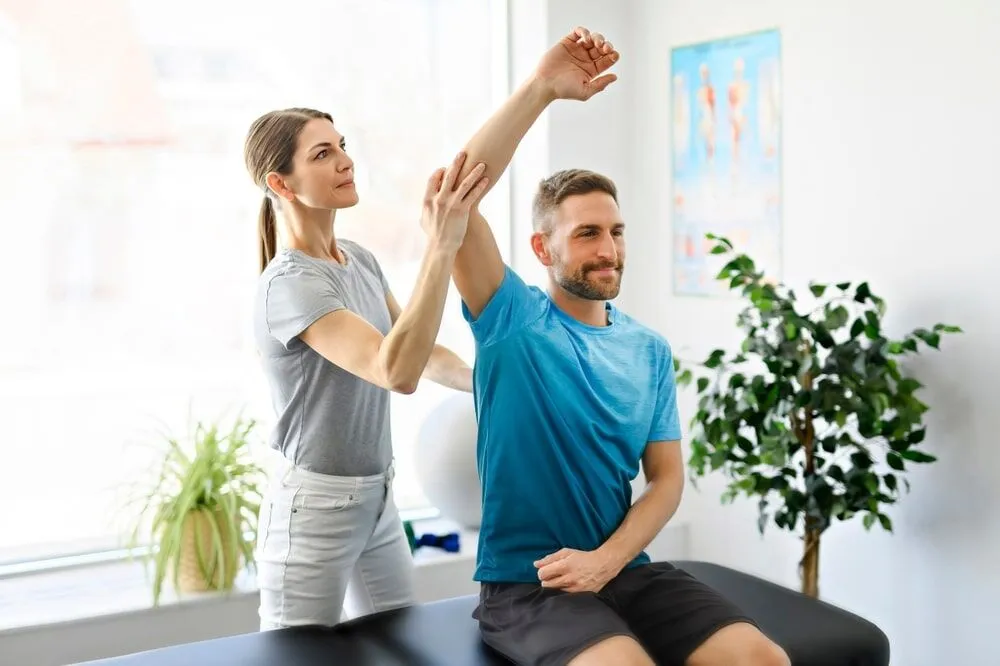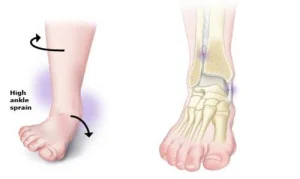7 Best Shoulder Mobility Exercises
Introduction
Improve your shoulder flexibility, reduce stiffness, and enhance your range of motion with these effective shoulder mobility exercises. Ideal for anyone recovering from injury, dealing with tightness, or looking to maintain joint health.
Focus on movements like arm circles, doorway stretches, and pendulum exercises that target a mix of mild stretching and strengthening activities is advised to treat shoulder pain and increase range of motion. Focus on movements like arm circles, doorway stretches, and pendulum exercises that target the rotator cuff and surrounding muscles. Additionally, by preventing tension, these workouts may help avoid injuries later on.
The physical therapists advise performing these stretches three to five times per week. Though stretching lightly after a shoulder-strengthening activity can also help prevent muscle pain and maintain long, flexible shoulder muscles, you can perform them at any time of day. Additionally, warming up with these stretches before a workout will improve muscle activation for the strengthening activities.
Why is shoulder mobility significant?
For everyday life tasks and functional movements like bathing, dressing, and placing objects on an above-shelf, it is essential.
- Increased Range of Motion: By improving your shoulder joint’s range of motion, these workouts make it easier for you to carry out daily duties like reaching behind your back or overhead.
- Injury Prevention: These exercises help avoid common problems like rotator cuff tears and impingement by strengthening and enhancing the flexibility of the muscles and tendons surrounding the shoulder.
- Improved Athletic Performance: Good shoulder mobility is crucial for athletes to perform at their best and avoid injuries, particularly those participating in sports like swimming, tennis, or volleyball that call for overhead motions.
- Improved Posture: By easing stiffness and imbalances in the muscles that might force the shoulder blades forward, increased shoulder mobility can help improve posture.
- Daily Activity Support: A variety of daily activities, such as dressing, reaching for objects, and even moving your head, require shoulder mobility.
In addition to keeping the muscles free, a movable joint increases blood flow to all soft tissues. Maintaining normal motion reduces your risk of injury and avoids muscular imbalances. The impacted muscles are unable to function normally and may get weaker. For this reason, it’s critical to treat a stiff shoulder before it worsens.
What leads to limited shoulder mobility?
Additionally, you could find that the shoulder is difficult to sleep on. Typical reasons for tight shoulders include:
- Frozen shoulder
- Shoulder arthritis
- Shoulder bursitis
- Muscle knots
Additionally, you should seek medical attention right away if you see any symptoms of a stroke, such as sudden facial droop, sudden change in speech, or sudden numbness or weakness in one arm.
How to Test Your Shoulder Mobility
The most accurate assessment of your present active and passive range of motion will come from a physical therapist.
It can take some effort or turning to get to the wall at all. A discrepancy in your range of motion between each shoulder may also be noticeable to you. While performing arm or shoulder circles during a warm-up, you might even feel some tightness or impingement in addition to the wall test, which would also suggest limited mobility, he says.
Additionally, you may check how your range of motion compares to the objective or maximum range for that angle.
Shoulder flexion
Practice flexion by raising your arms in front of your body and pointing your hands toward something in front of you while keeping your arms straight and palms against your sides. This entails raising your arms as high as you can over your head while keeping your palms against your sides.
Shoulder extension
An extremely powerful exercise that may enhance your upper body’s strength, stability, and mobility is shoulder extensions. Shoulder extensions target the triceps, posterior deltoids, and upper back muscles that support, which improve posture, reduce the chance of injury, and increase endurance during exercise.
You can abduct your shoulder by lifting your arm out from the sides of your body. Starting with your palms at your sides, a healthy shoulder’s usual abduction range is approximately 150 degrees. Make sure your arms are straight.
Shoulder adduction
When you hug yourself, your shoulders are adducted. It could be challenging to move your arms inward if your biceps or chest are quite muscular.
Internal rotation.
The action that pulls your forearm closer to your body’s midline, similar to rotating your hand inward, is called shoulder internal rotation. A healthy shoulder normally has an internal rotation range of 70 to 90 degrees, and it is an essential component of many daily activities.
External rotation
Bend your elbows to a 90-degree angle while keeping your arms at your sides, palms up. Swing your forearms away from your body while maintaining your elbows against it. The movement known as shoulder external rotation turns the palm outward by rotating the upper arm away from the midline of the body.
7 Best Shoulder Mobility Exercises Video
7 Exercises for Shoulder Mobility
Shoulder Rolls
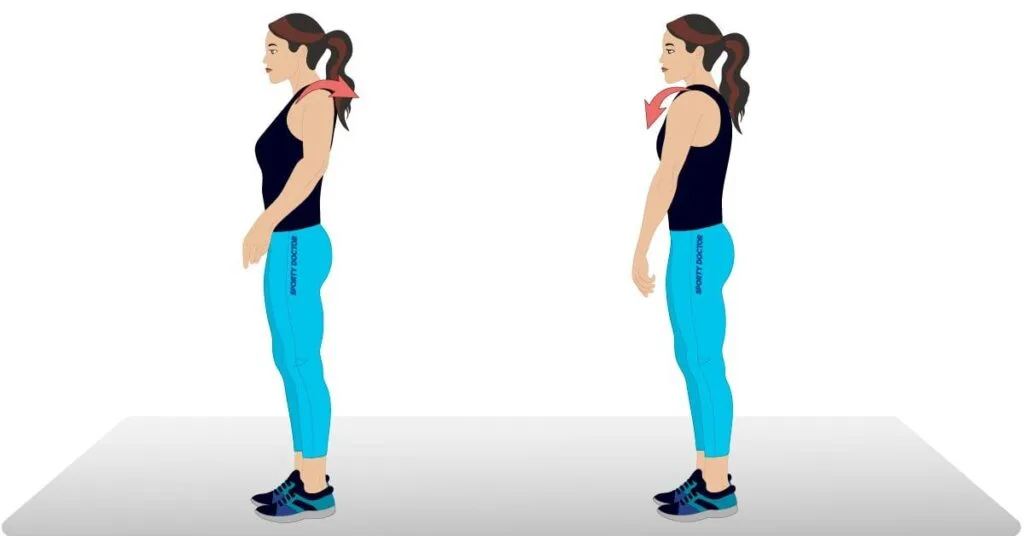
For shoulder pain relief, shoulder rolls are a great place to start. Start by placing your arms at your sides in a relaxed position while standing or sitting comfortably. The deltoid and trapezius muscles are the focus of this stretch, which releases tension and increases blood flow. To efficiently eliminate stiffness and preserve shoulder health, perform shoulder rolls daily.
Wall angel

The wall angel exercise improves spinal mobility by working the muscles in the upper and lower back. Additionally, it can assist you in stretching your tense chest muscles and improving the external range of motion in your shoulder joint. For folks who sit or slump a lot, wall angels are only one of several excellent posture exercises.
- Bend your elbows out to the sides while keeping your head level. Make an effort to keep your forearms and hands against the wall. Avoid sharp pains by keeping them as close to the wall as possible.
- Lower your arms gradually until your hands are parallel to your head while keeping your forearms and hands close to the wall.
- Perform two to three 10-rep sets.
Arm Circles
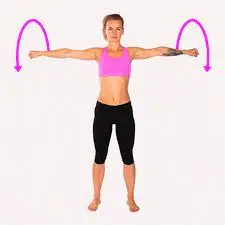
A quick and simple technique to warm up your shoulder muscles and improve shoulder mobility is to perform arm circles. They increase the range of motion, ease stiff muscles, and improve blood flow to the shoulder joint. Raise your arms to shoulder level. Any shoulder pain management regimen must include arm circles because they increase blood flow and prime the shoulder joints for longer stretches.
Thread the Needle
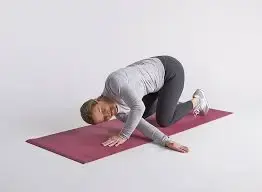
For shoulder mobility to be produced, thoracic spine movement is required. “Threading the needle” is a metaphor or phrase that refers to effectively handling a challenging, delicate, or complex situation that calls for a high level of expertise and accuracy. It frequently entails resolving conflicts or accomplishing a goal under limited circumstances.
How to go about it:
- While moving, look toward your arm. This is the initial position.
- Next, extend the lower arm toward the left and under the torso. Hold for at least ten seconds.
- Go back to where you were before.
- Do it again. Perform 5–10 repetitions.
- Repeat on the other side.
Pendulum Swings
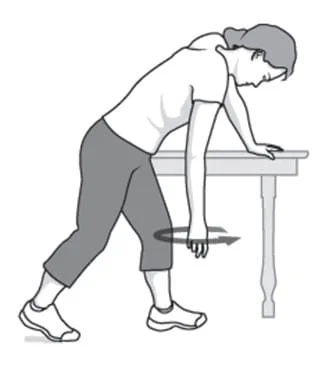
A simple exercise that’s frequently suggested to increase shoulder range of motion is the pendulum stretch. It entails controlled, gentle swinging of the affected arm, utilizing momentum and gravity to enhance movement. People who have frozen shoulder or other diseases that restrict shoulder movement may find this exercise especially beneficial. It’s especially helpful for warming up the muscles and reducing stiffness.
- The pendulum swing is a mild workout that helps to increase shoulder mobility and decrease stiffness. The technique is to swing your arm gently in small circles, which get larger as your shoulder relaxes. This exercise can be very beneficial for people who are recuperating from shoulder injuries or who are experiencing stiffness.
- Benefits: Reduces stiffness and increases flexibility.
Scapular retraction/protraction exercises
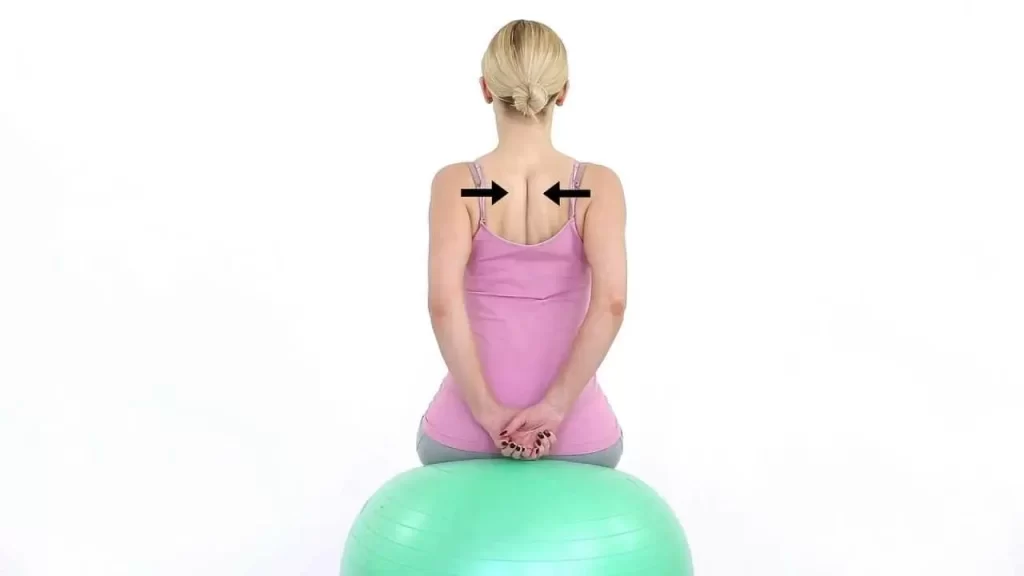
The muscles in charge of regulating shoulder blade movement are the focus of these exercises. People can lessen shoulder tension and enhance their posture by engaging in scapular retraction and protraction exercises.
Setting the scapula is a crucial part of scapular workouts. Using this technique, the shoulder blades are stabilized in a neutral position to encourage correct alignment while moving. It makes sure that there is no needless strain or pain and that the shoulders are functioning at their best. Scapular protraction is pushing your shoulder blades apart, and scapular retraction is drawing them together toward your spine.
Scapular retraction can be done by:
- Be erect while standing or sitting.
- Your shoulders should be relaxed.
- The shoulder blades can be squeezed together by drawing them closer to your spine.
- Hold this pose for a few seconds, then let go.
- Do this for multiple sets.
For scapular protraction:
- Position yourself in a comfortable sitting or standing position.
- Have your shoulders relaxed first.
- Maintain proper posture while standing or sitting, then gradually curve your upper back forward, as though you were attempting to push your shoulder blades apart.
- Holding this position, switch back to neutral.
- Continue for several sets.
You may improve posture and lessen shoulder pain by performing these exercises daily basis, which will strengthen the muscles that keep your shoulder blades in the right place.
Cross-body shoulder stretch
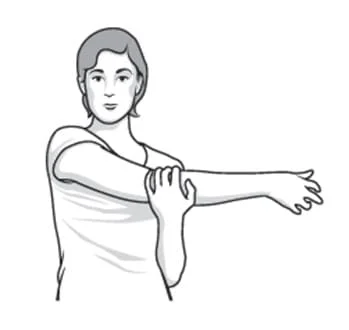
To perform this stretch:
- Your feet should be slightly less than shoulder-width apart as you raise your right arm to just below shoulder level.
- As you carefully move your right arm across your body, place your left hand on your right elbow to support your arm.
- On the other side, repeat.
- Repeat 3–5 times on each side.
Common Mistakes to Avoid
Notwithstanding the effectiveness of these scapular retraction exercises, it’s crucial to avoid typical blunders that could impede your growth. These errors include, among others:
- Overusing weight and sacrificing form.
- Rounding the shoulders while working out.
- Making the lower back arch, which results in bad posture.
Which symptoms indicate that your shoulder mobility needs to be improved?
Since neck problems are frequently linked to weakness or a lack of mobility in the shoulders, if you’ve been having neck pain when riding or not, that may also be an indication that your shoulders need care. Additionally, you may feel stiffness in your T-spine or shoulders.
Along with shoulder soreness, you may experience post-exercise numbness and tingling in your hands or upper body, as well as a restricted range of motion in your upper back during strength training (such as when attempting to raise your arms above for a move like the push). “All of these indicators may indicate that cyclists should check for adequate strength and range of motion,” Fairchild said.
Summary
Every workout regimen should include specific shoulder exercises and stretches, regardless of whether you’re an athlete, gym-goer, or simply looking to improve the strength, mobility, and overall health of your shoulder muscles and joints.
- Increase your range of motion.
- Reduce tension
- Improve flexibility
- Prevent injury
Consider consulting a physical therapist or personal trainer if you’re new to shoulder stretches and exercises. They can assist you in carrying out the motions with the proper form and technique. A shoulder that is achy and tight can make a lot of everyday tasks challenging.
FAQs
Can I move my shoulders every day?
This frequency can be changed according to your needs and how your body reacts to the stretches, but it is typically advised for keeping flexibility. Maintaining muscular length and flexibility and minimizing pain can be achieved by gently stretching following shoulder-strengthening activities. Although stretches are useful at any time, now is a particularly good time to do them.
How can the range of motion be expanded?
Use a mix of strengthening and stretching exercises, emphasizing both static and dynamic stretches, and think about employing foam rolling and massage to improve range of motion. It’s crucial to be consistent, pay attention to your body, and progressively raise the intensity.
How can I increase the range of motion in my shoulders?
Use both static and dynamic stretches, as well as strength and flexibility-focused workouts, to increase shoulder mobility. Concentrate on properly executed exercises that gradually increase repetitions and sets, such as arm swings, wall rolls, scapular circles, and internal/external rotation stretches.
How can rounded shoulders be fixed permanently?
With specific stretches and core, chest, and back strengthening exercises, rounded shoulders—which are frequently the result of muscular imbalances—can be corrected. To fix your rounded shoulders and spine, you might need surgery if your kyphosis is quite bad, but there are many hazards involved.
What is the ideal sleeping position?
On the other hand, some people have trouble falling asleep in this position. Additionally, side sleeping—especially on the left—is a healthy alternative, especially for people with sleep apnea or snoring.
Which exercise promotes stronger trunk muscles and shoulder mobility?
Wall Angels are an excellent mobility exercise since they increase the shoulder joint range of motion. Stretching the chest and front of the shoulders is another benefit of this workout. If you want to get stronger and better at overhead pressing, this is an excellent exercise to undertake.
What workouts strengthen the shoulders?
By working the various heads of the deltoid muscles, these exercises help to strengthen and stabilize the shoulder as a whole. Make sure your forearms are in line with the wall and your thumb is facing away from it. Holding your shoulder blades back, squeeze the muscles in this area lightly, then slowly raise both arms.
Is shoulder mobility something I can do daily?
You run the risk of missing out on the potential advantages of stretching regularly. You can do them whenever you want. However, maintaining long, flexible shoulder muscles and reducing pain can also be accomplished through gently stretching after engaging in shoulder-strengthening exercises.
How can one improve shoulder mobility?
Use a range of stretches and exercises that focus on the shoulder joint and surrounding muscles to increase shoulder mobility. Pay attention to activities that increase shoulder blade mobility and external rotation, such as arm circles, doorway stretches, and cross-body stretches. By doing these exercises regularly, you can enhance shoulder function overall, reduce stiffness, and increase flexibility.
Reference
- Lindberg, S. (2020, January 10). 10 Shoulder mobility exercises and stretches. Healthline. https://www.healthline.com/health/shoulder-mobility-exercises#exercises
- 7 Stretches to Help Alleviate Shoulder Pain – MOBILIZE 物理治療中心. (2025, May 21). MOBILIZE 物理治療中心. https://mobilizephysio.com/7-stretches-to-help-alleviate-shoulder-pain/
- Leicht, L., & Kearns, K. (2024, September 9). 7 Shoulder mobility exercises to relieve aches and fix your posture. Bicycling. https://www.bicycling.com/training/a45700078/shoulder-mobility-exercises/
- Therapy, M. H. (2024, July 19). Top 10 shoulder physiotherapy exercises for pain relief. Melbourne Hand Therapy. https://www.melbournehandtherapy.com.au/top-10-shoulder-physiotherapy-exercises/
- Aeromats. (n.d.). Scapular retraction exercises: Strengthen your upper back and improve shoulder mobility. https://www.aeromats.com/blogs/resources/scapular-retraction-exercises
- Physiotherapy, P. (2023, June 19). The most effective physiotherapy exercises for shoulder pain and tightness. ProActive Physiotherapy. https://proactivesportspt.ca/physiotherapy-exercises-for-shoulder-pain/

